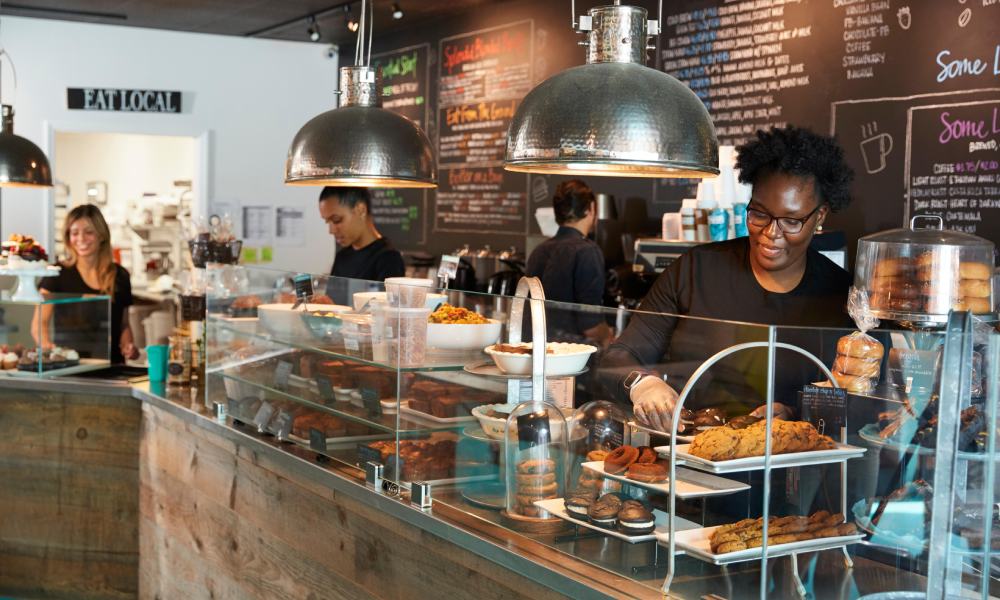An inside guide to 2023’s coffee sector trends
From rising coffee shop footfall to the explosion of sustainable coffee balls, these are the coffee sector trends set to define the year ahead.
The rise of fine robusta blends
For many hospitality businesses, 2022 threw up a number of challenges, from Covid-19 lockdowns to skyrocketing energy bills.
Extreme weather conditions and the outbreak of conflict in Ukraine also caused the price of coffee to rise, which left roasters and café owners with a difficult decision: to pass on the higher costs to customers or switch to cheaper alternatives.
This dilemma will continue to hang over businesses as a new year rolls around. However, for those who want to avoid raising their prices, arabica-robusta blends will likely become a more ubiquitous item on menus.
Historically, robusta has been considered an inferior product, and processing systems in many producing countries still lag behind their arabica coffee equivalents. But robusta’s affordability has made it the subject of extensive research (it is around half the price of arabica).
In line with this trend, we can expect to see greater attention on high quality – or “fine” – robusta, which some in the industry already believe has massive potential.

Higher, not lower, coffee shop footfall
Tight budgets aren’t just a concern for businesses – consumers are also battling rampant inflation. Widely referred to as the “cost of living crisis”, it has seen rising energy bills and soaring food costs, among other things.
Although the expected fallout from this is a drop in out-of-home coffee sales, opinion is divided. Some believe the market could shift (like it did during the pandemic) and people will drink more coffee at home.
However, others suggest consumers will do the opposite. Rather than curb spending on small luxuries, such as a takeaway coffee, a number of industry experts think people will treat themselves to more of them, as they cut back on other, more expensive purchases, such as cars, holidays, and meals out.
The quest for the ultimate sustainable coffee
A remarkable – if somewhat controversial – product to emerge in 2022 was beanless coffee – upcycled ingredients that replicate the characteristics of coffee without the inclusion of any actual coffee beans.
While beanless coffee isn’t necessarily the answer to the coffee industry’s climate crisis, we can expect to see many more companies continuing putting forward solutions as sustainability enters a critical phase.
Capsules also remain a popular at-home option, particularly as more eco-friendly biodegradable and compostable options flood the market.
However, they are set to face stiff competition, not from other capsule manufacturers, but from new formats such as 100% compostable seaweed coffee balls.

More room for automation
While some trends are previously unheard of, others build on years of momentum. And, with rising energy costs and continued labour shortages threatening to bring down businesses, one area that has become increasingly important is automation.
Not only has automation helped successful café chains grow, such as Pret A Manger, it has also brought consistent, high-quality coffee to more places, from pubs and hotels to offices, service stations, and airport lounges.
Perfectly steamed milk together with a full-bodied shot of espresso is no longer the preserve of specialty coffee shops – it can now be achieved with the touch of a button. And for coffee shops, it provides baristas with more time to have more meaningful discussions at a point when competition has never been more fierce.
There’s an environmental benefit, too. Research suggests that the energy-saving potential of superautomatic coffee machines versus traditional espresso machines is high, thanks to features such as standby mode and motion sensors. Expect automation to continue taking off in 2023.
A modular future
The emergence of modular coffee machine systems is redefining how coffee is made both at home and in cafés. Essentially, a modular system is a deconstructed espresso machine divided into several “modules”, each capable of performing a specific function.
Typically, this streamlines the coffee bar and enables greater flexibility than a large, traditional espresso machine. For instance, the Heylo modular system is divided into a Coffee Module and a Milk Module. Depending on the needs of a café or home barista, they can be arranged or added on as required, improving barista workflow and overall efficiency.
The Coffee Module facilitates full brewing control, giving the user options to create custom recipes and flavour profiles. Both modules use electromagnetic induction-heating technology, which can help reduce energy consumption.
Furthermore, flow and pressure control allows users to fine-tune flow rate and the level of pressure at various stages during brewing.
At the same time, a smart alarm installed in the machine notifies users when custom recipes need adjustments throughout the day. Its small form makes it portable, and plug-and-play functionality makes it suitable for markets and mobile coffee vans.
Get ready to see a lot more of them in the next 12 months.








